Anogeissus Pendula is a small tree or shrub found in abundance in the Aravali hills around Jaipur. It is a hardy tree that can survive even in the extreme conditions that explain its presence in the Aravali hills in Rajasthan. The common names of the Anogeissus Pendula tree are Dhok, Dhauk, Kardhai, Dhonk, Dhau and Dhoy in Hindi. It is commonly called Dhok tree in North India. It is also known as Button Tree.
Salai tree also grows in the hills of Aravali and is also a hardy tree. You can read the full post on Salai Tree or Boswellia Serrata Tree – Salai Guggul Tree
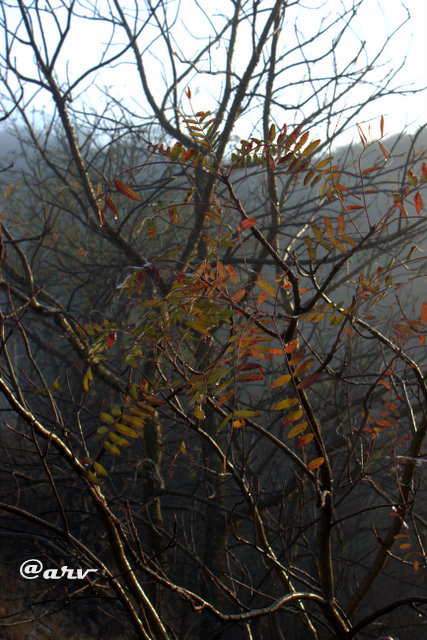
Anogeissus Pendula used
The tree is important because it provides wood; it is one of the hardest woods available in this geographic region. The leaves are used as feed. The uniqueness of this tree is that it can easily grow on the rocky surface which means it is one of its kind trees. Since it is hardy, it can survive in the harshest conditions.
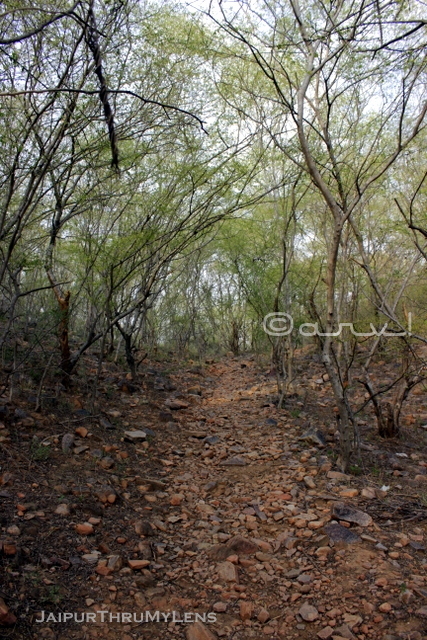
While traditional medicine such as Ayurveda recognizes many of its medicinal properties, modern medicine has not fully exploited it. We still need to do extensive research on this tree. Science has not fully exploited its potential as far as the Dhok tree is concerned. The tribal and rural people use Anogeissus Pendula for many medicinal uses for ailments like dysentery or for its antioxidant properties.

This tree is rated as one of the best hardwoods out there. And for this reason, the Dhok tree is used as a wooden handle in tools such as spade, axe, hammer and many other agricultural implements and tools. After the winter, the tree sheds its leaves. The leaves are an excellent biomass. The tree can be used to regenerate the affected land.
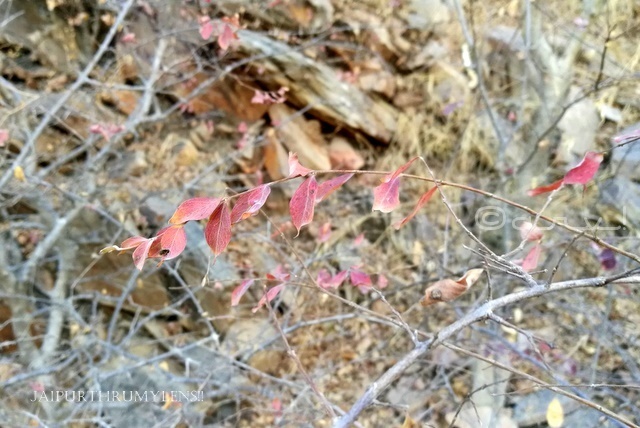
It is also found in parts of Madhya Pradesh, Delhi and Haryana. The bark is grey-white in color. While walking through Aravali, I noticed that this tree is being cut down by the locals for fuel. Read Stop cutting trees
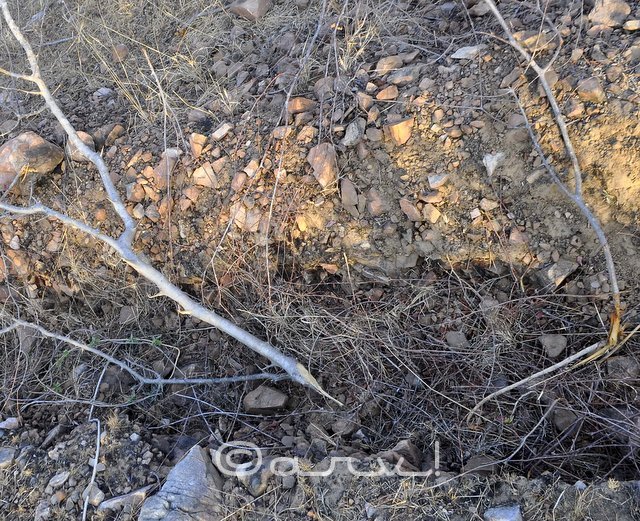
I’m not sure if the forest department continues to plant this tree species in hills. Instead of planting invasive trees such as the Israeli Babool, there is a need to plant more local tree species such as the Dhok tree that adapt very well to the harsh climatic conditions of Rajasthan, especially in the Aravali belt. The ill effects of Israeli Babool and Eucalyptus have long been known.
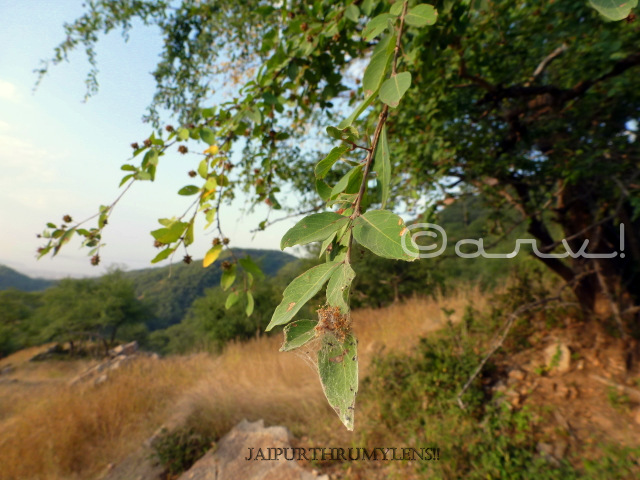
Why is Anogeissus Pendula or Dhok Trees the most common tree in the Aravali Hill Mountains?
The reason Anogeissus Pendula or Dhok Tree thrives in the hills of Aravali is that it can survive on a rocky surface with little soil and water. This is one of the few trees that can adapt very well to the steep slopes common in the Aravali hills. It usually grows in clusters and therefore less likely to find a solitary Dhok tree. Here are some pictures of the Dhok tree from the Aravali hills. It is easy to see more trees on the slopes than on the top of the hills.

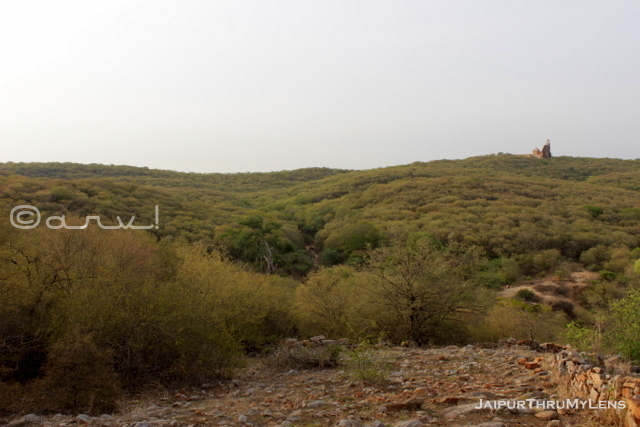
Anogeissus Pendula Roots
Something should also be mentioned about the roots of Dhok trees. It has the ability to bond well on the mountainous surface without getting extremely deep for strength. In addition, the roots have an underground system that allows the tree to spread well over a large area. Here’s a photo of a Dhok tree with growth at the base of the trunk that doesn’t look like a stem spur; this is unusual for a tree in this area.
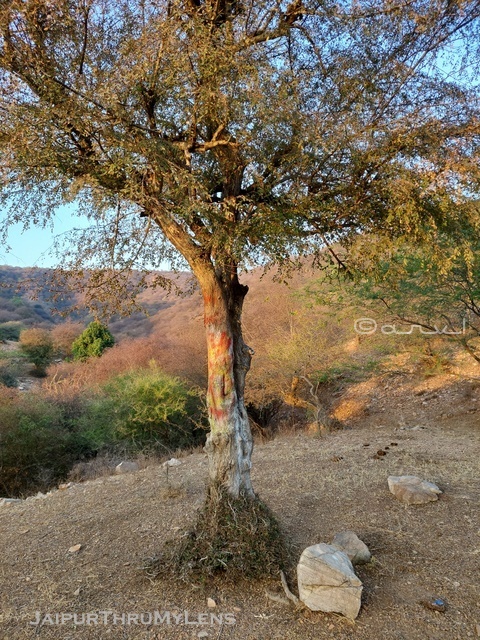
Here’s a close-up of the base of the trunk.

Anogeissus Pendula Leaves
If you haven’t seen the photo of the leaf of the Anogeissus Pendula tree, here it is. The leaves change color during the winter.
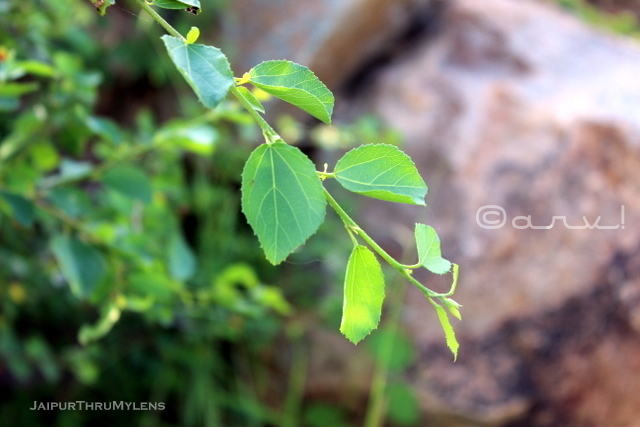
From green in the monsoon, it turns to crimson during the winters. Finally, it sheds its leaves to help it survive during the dry summers. A typical feature of the monsoon forest system.
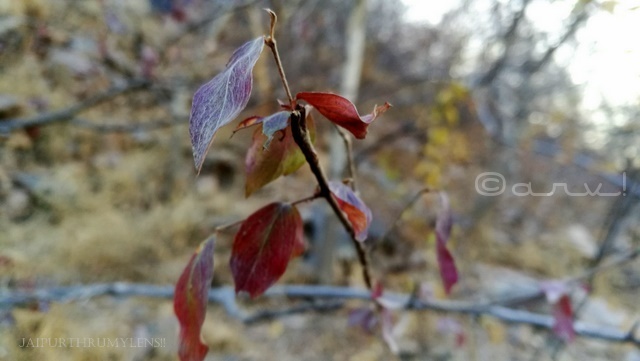
Anogeissus Pendula Fruit
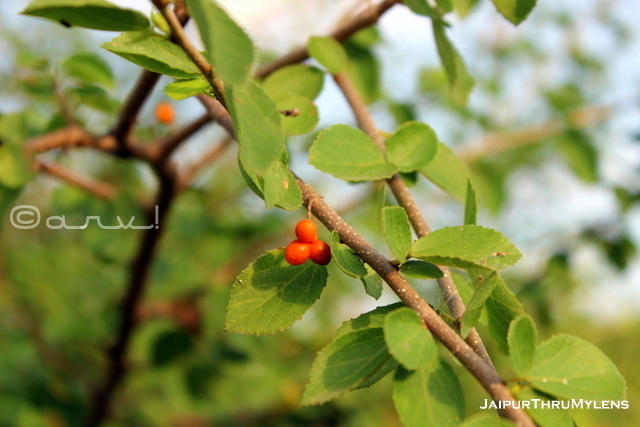
Where can you find an Anogeissus Pendula tree?
Here is a nice shot of the Dhok tree with Rufous Treepies in Ranthambore.
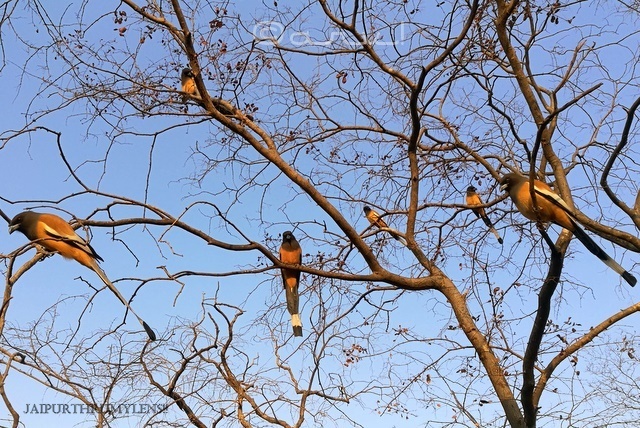
I keep sharing my hiking trips in Jaipur where I get to see this tree in abundance. View this beautiful forest lined with many Anogeissus Pendula trees in Walk the Dhok tree path
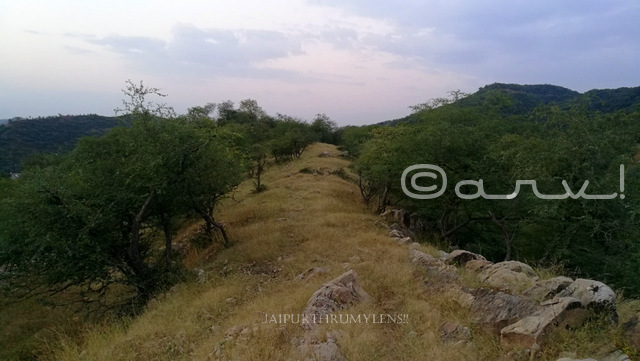
I hope we all do something to ensure growth and survival in the wilderness.
View other stories in the trees of Jaipur.

